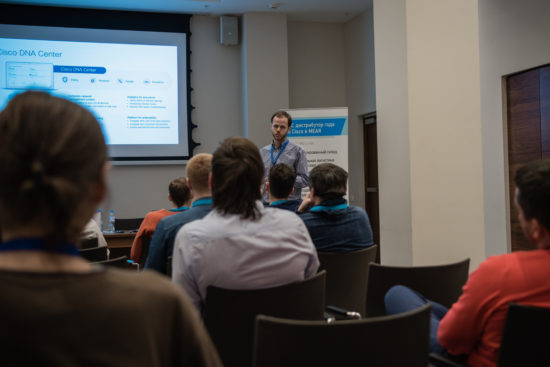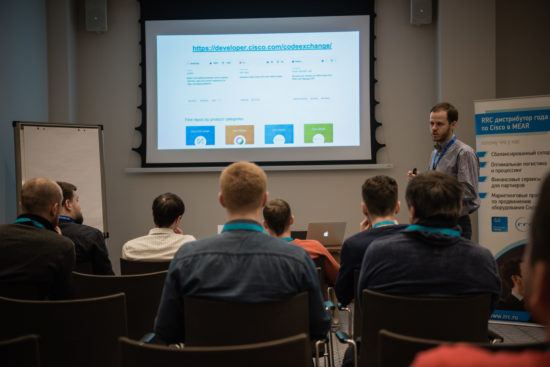A Cisco DevNet meet-up was conducted in mid-April for partners and integrators from Belarus. The event brought together engineers, administrators, and developers of local integrators and partners, and consisted of several parts.

Cisco DevNet: capabilities, solutions and examples of use
During the first briefing part, we reviewed the capabilities and benefits of the Cisco DevNet program. In particular, it was noted that a large number of educational materials are available:
Sandboxes are also available for deployment and testing of your applications in the following areas: Networking, Security, Data Center, Collaboration, IoT, Cloud, Open Source, Analytics and Automation SW. Examples of Cisco DevNet being used by organizations and enterprises were also considered.
Not all visitors had sufficient knowledge of programming languages. Therefore, if you face difficulties using programming languages, you can use Postman – a tool for managing APIs – to solve these or other tasks. Postman’s graphical interface is clear and makes it much easier to work with REST APIs. The training platform for acquaintance with Postman has a separate module.
Moreover, at the event we considered ready-made Postman collections that work with various Cisco devices and technologies:

Creating applications for programmable networks
During the second part, visitors got acquainted with how to create applications for programmable networks. In particular, we have reviewed the needs of local integrators and clients, and how these issues can be solved with Cisco APIs.
Ready-to-use frameworks and libraries for working with network devices also attracted great attention. It was considered how to use different open source projects and tools for Network Services Orchestrator, or automation such as Ansible, Puppet, NAPALM or Nornir. You can see more video on NetDevOps Live page. A selected technology stack is also important to create applications; during the meet-up, we especially exchanged views with the developers on the choice of programming languages and technologies for rapid prototyping of applications.
Cisco DNA Programmability
It was the third and final part. In general, we have considered here projects and frameworks which can be used to automate network processes. Separate attention was paid to the benefits and capabilities of Cisco Digital Network Architecture Center (DNA-C). We considered existing integrations and examples of third-party applications and focused on Cisco DNA Center open-source script and solution, which can be viewed within Cisco Code Exchange.
To become familiar with DNA programmability, you can use the separate track DevNet Express for Cisco DNA v3, consisting of 11 modules which include information ranging from your computer configuration and operating system to work with REST APIs using Python and Model Driven Programmability (using NETCONF/RESTCONF).

Particular attention was paid to a review of DevNet Code Exchange, namely Code Exchange, which allows developers to view and add their scripts and solutions.
In general, I would like to note that Minsk, the capital of Belarus, is a place where a large community of developers, IT architects and engineers is concentrated. Moreover, many offices of international IT companies are located there. Some of the well-known outsourcing and product IT companies are Belarusian in origin, and they have headquarters in Minsk.
Join DevNet: Access the learning labs, docs, and sandboxes you need for network automation and application development.
We’d love to hear what you think. Ask a question or leave a comment below.
And stay connected with Cisco DevNet on social!
Twitter @CiscoDevNet | Facebook | LinkedIn
Visit the new Developer Video Channel

CONNECT WITH US